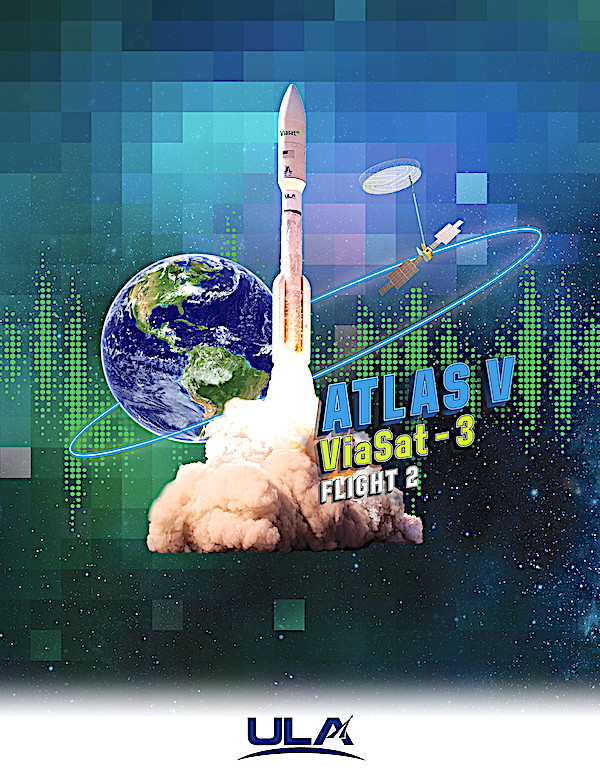
The launch of a United Launch Alliance (ULA) Atlas V 551 rocket carrying the ViaSat-3 Flight 2 (F2) mission for Viasat is planned for no earlier than Monday, November 3, 2025, pending range approval.
Once in service, VS-3 F2 is expected to more than double the bandwidth capacity of Viasat’s entire existing fleet and marks a significant milestone in our satellite roadmap.
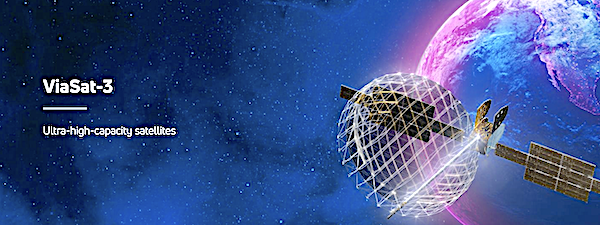
An Atlas V 551 rocket, configured with five side-mounted solid rocket boosters and a standard-length payload fairing, will utilize several launch optimization features to place the ViaSat-3 Flight 2 spacecraft into a geosynchronous transfer orbit. The craft is one of the heaviest single-satellite payloads. Liftoff will occur from Space Launch Complex-41 at Cape Canaveral Space Force Station, Florida.
The launch is scheduled for 10:36 p.m. EST at the opening of a 44-minute window, from Space Launch Complex-41 at Cape Canaveral Space Force Station, Florida.
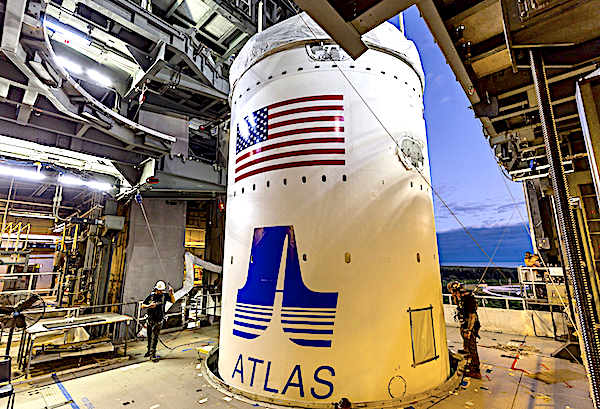
ULA’s Atlas V ready to launch VIASAT-3 Flight 2 enhancing global connectivity

ULA’s Atlas V will soon be launching the ViaSat-3 Flight 2 ultra-high-capacity broadband spacecraft that is the second of three ultra-high-capacity satellites for Viasat, a global technology company.
Designed to significantly increase their global internet bandwidth capacity ViaSat is helping businesses, governments and communities transform their world through connectivity. Once in service, ViaSat-3 Flight 2 is expected to more than double the bandwidth capacity of Viasat’s entire existing satellite fleet and deliver enhanced global connectivity.
The ViaSat-3 is scheduled to launch in the second half of October from Cape Canaveral Space Force Station, Florida, aboard a United Launch Alliance (ULA) Atlas V rocket.
Boeing built ViaSat-3 arrives at Cape Canaveral for upcoming launch

Viasat’s ultra-high-capacity ViaSat-3 Flight 2 (VS-3 F2) satellite, built by Boeing, has completed its cross-country flight from Los Angeles International Airport (LAX) to Kennedy Space Center, Florida.
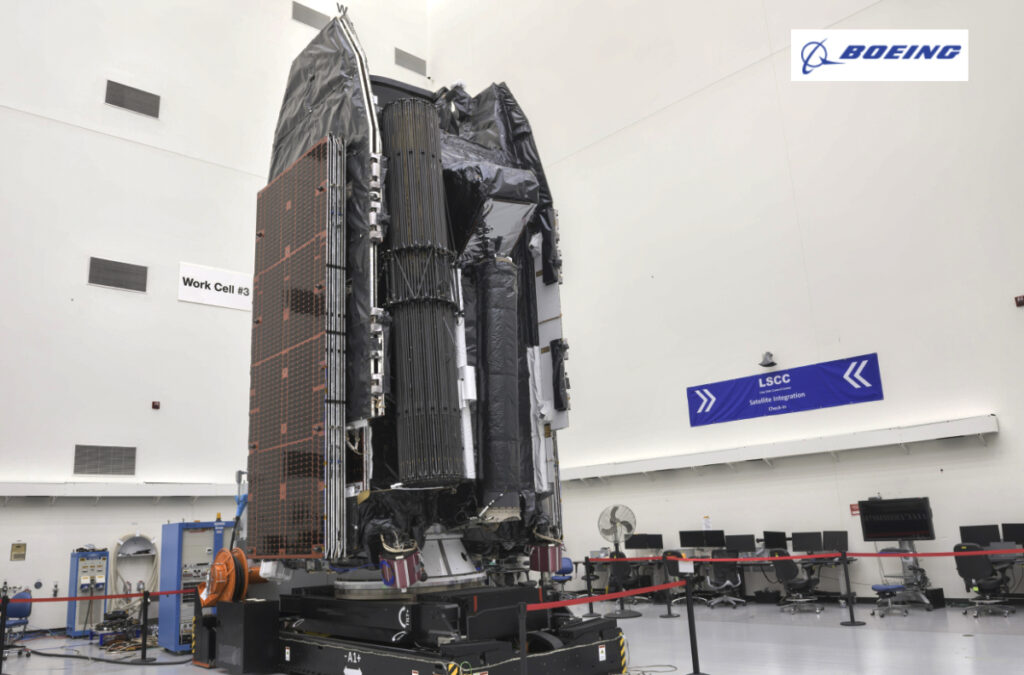
VS-3 F2 was delivered to LAX by Boeing from its El Segundo, California, facility, before being transported in one of the world’s largest cargo airplanes, an Antonov AN-124, touching down in Florida in the early hours of September 30, 2025.
The satellite was safely and securely shipped in a specialized container that carefully controls environmental factors such as temperature and air cleanliness as required to protect the highly complex technology throughout the flight.
With precision down to the millimeter, loading the container onto an AN-124 cargo bay is an exceptionally intricate procedure that takes around four to six hours.
Now that VS-3 F2 has arrived at Cape Canaveral Space Force Station, the Boeing and Viasat teams, together with launch partner United Launch Alliance (ULA), are readying the spacecraft for launch in late October 2025, aboard a powerful ULA Atlas V 551 rocket.
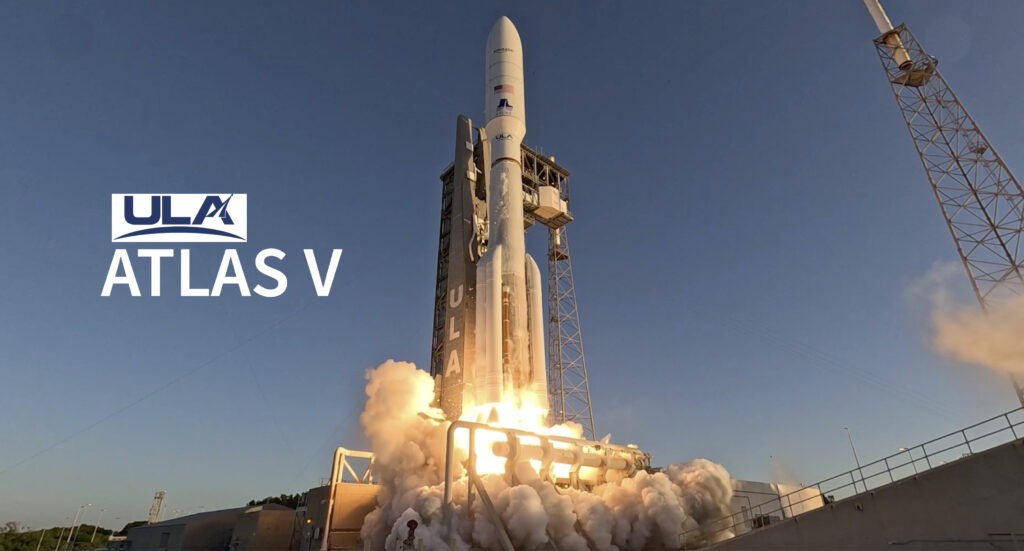
VS-3 F2 is the second of three ViaSat-3 Ka-band satellites and is designed to provide more than double the bandwidth capacity of Viasat’s entire existing fleet. Upon anticipated service entry in early 2026, VS-3 F2 is expected to add more than 1 Tbps capacity to our network over the Americas.
VS-3 F2 will now undergo comprehensive testing to verify all systems are go for launch following transport. After this, the satellite will be secured to the Atlas V launch vehicle adapter, enclosed within the payload fairing, which protects it during the three minutes of atmospheric flight, and then mated (attached) to the rocket. From there, it will be put through final preparations ahead of launching VS-3 F2 into a GTO, from which the satellite will propel itself over the coming few months into GEO approximately 22,000 miles (36,000 km) above the Earth’s equator.
The Atlas V rocket, which stands 196 feet (59.7 meters) tall and will weigh 1.3 million pounds (587,000 kg) when fully fueled at liftoff, will be rolled out to Space Launch Complex 41 (SLC-41) at Cape Canaveral Space Force Station the day before launch.
I’m extremely proud of the Viasat team and our partnership with Boeing in successfully completing ViaSat-3 F2’s manufacture and testing. Being just a few weeks out from launch is incredibly exciting – this achievement represents the dedication and innovative spirit of hundreds of talented professionals who’ve lent their expertise to this mission. A huge thank you to everyone who has contributed to this milestone. Now we turn our focus to getting F2 into orbit, where its tailored capabilities are expected to enable us to better serve our customers and meet increasing demand for resilient, global satellite communications,” said Dave Abrahamian, Vice President of Space Systems, Viasat. “The VS-3 constellation represents an important part of our global, multi-orbit, multi-band network, adding capacity that is secure, reliable, and highly flexible: with dynamic-beam-forming capabilities designed to rapidly shift capacity to wherever demand is greatest.”
